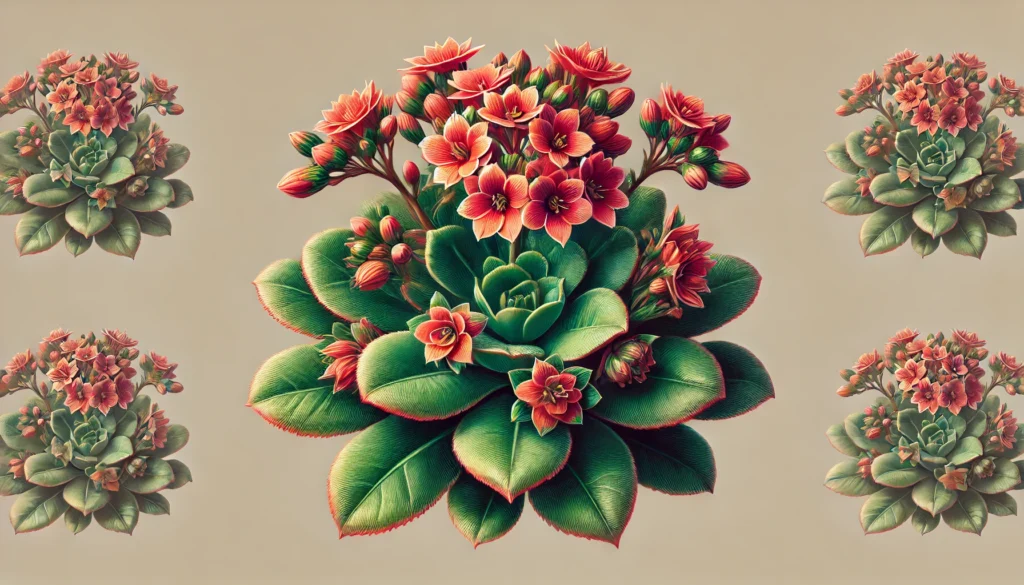

Home » Cat Plants » Is the Kalanchoe Plant Harmful to Cats?

The Kalanchoe plant, also known as the Mother-In-Law-Plant or Devil’s Backbone, is indeed toxic to cats. This popular succulent houseplant contains bufadienolides, which are cardiac glycosides that can cause serious health issues if ingested by felines. Kalanchoe species are commonly found in homes and gardens as ornamental plants due to their attractive flowers and easy care requirements. However, cat owners should be cautious about keeping these plants in areas accessible to their pets.
Ingestion may cause mild gastrointestinal upset, but is generally not life-threatening.
Ingestion can result in mild symptoms like vomiting, diarrhea, or drooling. Rarely fatal but may require veterinary care.
Eating these plants can lead to more pronounced symptoms like abdominal pain, lethargy, or difficulty breathing. Veterinary intervention may be necessary.
Ingesting even small amounts can cause severe symptoms like organ damage, seizures, or cardiac failure without rapid treatment.
All parts of these plants are extremely poisonous to cats and can quickly lead to death, even with immediate veterinary care.
** Please note: Please note that toxicity level can vary based on the amount ingested and the specific cat. It's always best to keep these plants completely inaccessible to cats and seek immediate veterinary care or call the poison hotline if you suspect your cat has ingested any part of a toxic plant.
If a cat ingests any part of the Kalanchoe plant, it may experience a range of symptoms due to the plant’s toxic properties. The severity of these symptoms can vary depending on the amount consumed and the individual cat’s sensitivity.Common symptoms of Kalanchoe poisoning in cats include:
It’s crucial to monitor your cat closely if you suspect it has ingested any part of a Kalanchoe plant and seek veterinary attention immediately if symptoms occur.
If you bring your cat to the veterinarian with suspected Kalanchoe poisoning, they may follow these steps for diagnosis:
The veterinarian will likely diagnose plant toxicity or more specifically, cardiac glycoside poisoning if Kalanchoe ingestion is confirmed.

A: Yes, the Kalanchoe plant is harmful to cats if ingested. It contains toxins that can cause gastrointestinal issues and, in severe cases, affect the heart.
A: If a cat eats Kalanchoe, symptoms like vomiting, diarrhea, and drooling may appear. In more severe cases, it can lead to abnormal heart rhythms and tremors.
A: The Kalanchoe plant is considered moderately toxic to pets, especially cats and dogs. While mild cases cause digestive discomfort, severe poisoning can impact the heart and require immediate veterinary care.
A: If your cat ingests Kalanchoe, it’s important to call your veterinarian right away. Early treatment can help manage symptoms and prevent serious complications.
A: Yes, many cat-safe plants like bamboo or Boston fern are great alternatives to Kalanchoe. These options are non-toxic and can enhance your home without posing any danger to your cat.
A: To prevent your cat from eating toxic plants such as Kalanchoe, avoid having them in your home or keep them in areas inaccessible to pets. Providing safe plants like cat grass can also help satisfy your cat’s curiosity.
The Kalanchoe genus belongs to the Crassulaceae family and includes over 100 species of flowering succulent plants. Native to Madagascar and tropical Africa, Kalanchoes were first described botanically in 1763 by Michel Adanson, a French naturalist. The name “Kalanchoe” is believed to come from the Chinese words “Kalan Chauhuy,” meaning “that which falls and grows.”
Kalanchoes gained popularity as ornamental plants in the early 20th century when Robert Blossfeld, a German botanist, introduced Kalanchoe blossfeldiana to the horticultural trade. This species, commonly known as flaming katy or florist kalanchoe, became widely cultivated for its colorful flowers and ease of care.
Despite their toxicity to pets, Kalanchoes remain popular houseplants and are often used in succulent gardens and as indoor decorative plants due to their attractive appearance and low maintenance requirements.
Please note: The information shared in this post is for informational purposes only and should not be considered as veterinary medical advice.
🐾 A hilarious or heart-melting cat video
🐾 Our latest paws-on review of a cool cat toy